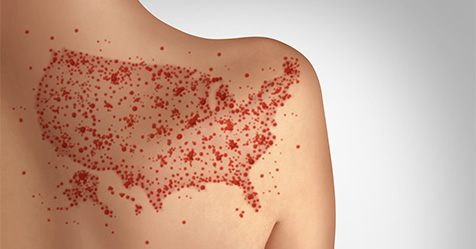Glass Cleaner Market to Hit $7.5B by 2032
The global glass cleaner market was valued at US$4.4 billion last year, and is projected to reach $7.5 billion by 2032, growing at a compound annual growth rate (CAGR) of 6.2%, according to a new Allied Market Research report.
The global glass cleaner market is experiencing growth due to several factors such as rise in construction activities in various regions and technological advancements in glass cleaner in the residential and commercial sector. The increasing focus on cleanliness and hygiene, particularly in households and commercial spaces, has led to a rising demand for effective glass cleaning products, the report said. Consumers also are prioritizing products that efficiently remove dirt, grime, and streaks from glass surfaces, contributing to the market’s growth.
Moreover, advancements in formulation technology have led to the development of glass cleaners with improved cleaning performance and convenience. Manufacturers continuously innovate to introduce products with features such as fast-drying formulas, streak-free finishes, and anti-fog properties, enhancing user satisfaction and driving market demand.
Sprays are in high demand in the glass cleaner market because of their convenience and ease of use, allowing users to apply the cleaning solution quickly and efficiently onto glass surfaces without the need for additional tools or equipment. Moreover, spray cleaners provide precise and targeted applications, allowing users to control the amount of cleaning solution dispensed onto the glass surface.
Additionally, commercial glass cleaners are in high demand. Commercial establishments, such as offices, restaurants, hotels, and retail stores, have large glass surfaces that require regular cleaning to maintain a clean and professional appearance. These businesses often prioritize cleanliness to create a positive impression on customers and visitors, making effective glass cleaning solutions essential. Moreover, commercial glass cleaners are formulated to deliver powerful cleaning performance and streak-free results, meeting the high standards of cleanliness required in professional environments. These cleaners are designed to remove tough stains, dirt, fingerprints, and smudges from glass surfaces quickly and efficiently, saving time and labor for commercial cleaning staff.
Regionally, North America has high demand for glass cleaners. The region has a large population with a high standard of living, leading to increased demand for household and commercial cleaning products, including glass cleaners. Moreover, the presence of a robust commercial sector, including offices, retail stores, restaurants, and hotels, contributes to the high demand for glass cleaners. Commercial establishments in North America place a strong emphasis on cleanliness to create a positive impression on customers and visitors, driving the need for effective glass cleaning solutions, the report said.


